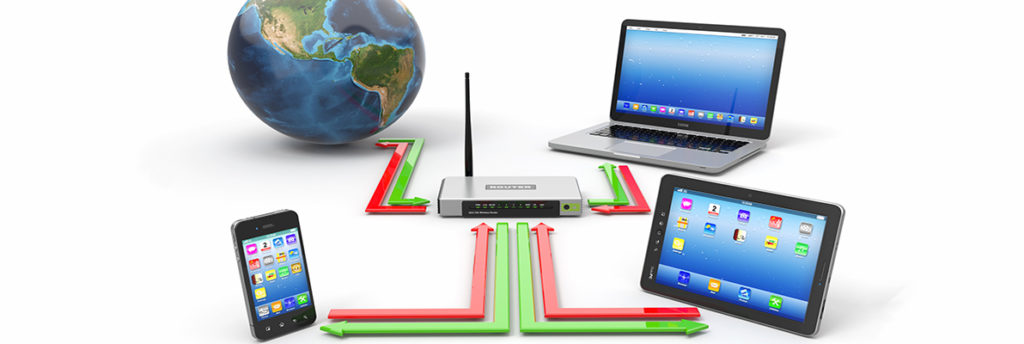
Computer terminology can be confusing, but it doesn’t have to be. We at Patient Computer Help for Grownups are experts not only in technology but also in making technology understandable and easy to use. Today we are going to explain what modems and routers are, what their functions are, and how you can identify each.
Modems
The word modem means “modulator-demodulator” and dates back to before the Internet was commonly used. Back then, their purpose was to encode and decode data so that it could be sent over ordinary phone lines. They were used for connecting computers to bulletin boards and to other computers.
In the early days of the Internet, most home computer users used modems to connect to it though dial-up services such as AOL and Earthlink. Today, most people connect to Internet using broadband modems. These modems pass data back and forth with your Internet Service Provider (ISP), such as your cable or satellite company.
For example, when you request a web page from your computer and through your router (whether or not via WiFi), the modem takes this request and passes it through to your ISP. It also receives the response to this request and passes it on to your computer or device, which then displays the page.
A broadband modem is usually a small box with a set of flashing lights that indicate communication between it and your ISP. Your ISP probably gave it to you when you signed up for service, if you didn’t buy it yourself. The modem takes as input the data line your ISP provided, which is typically the cable that comes through your wall. The output of a broadband modem is a standard Ethernet cable. These cables have connectors that look like the ones on phone cables only they are a bit wider.
If you don’t have a router, the Ethernet cable goes directly from the broadband modem into your computer, and only that computer will have access to the Internet. If you do have a router, then its input is the Ethernet cable coming from the modem.
Routers
A router is a device that lets multiple computers or devices share an Internet connection. Like a broadband modem, it is usually a small box with flashing lights that your ISP gave you or you bought yourself.
A router connects computers and devices to the Internet through either wired or wireless connections. A wired connection means that there is a Ethernet cable coming from the router directly into the computer, while a wireless connection means that the router is communicating to the computer or device over the air using WiFi. The latter is how your phone or tablet connects to the Internet when you are not using cellular data.
The router takes as input the Ethernet cable coming out of the broadband modem. If you have wired connections to computers, additional Ethernet cables lead from the router to the computers.
Here is another article (on another website) with additional information. https://networkshardware.com/router-vs-modem/ . Please come back here after reading.
Additional Information
In many instances, you are not required to buy or lease modems and routers from your ISP. You can buy them yourself, or lease them from your ISP. Also, you likely will be issued a combination modem and router if you don’t specify differently. These devices simplify the process and can reduce clutter. However, combination units typically don’t offer very good WiFi, especially for big houses.
